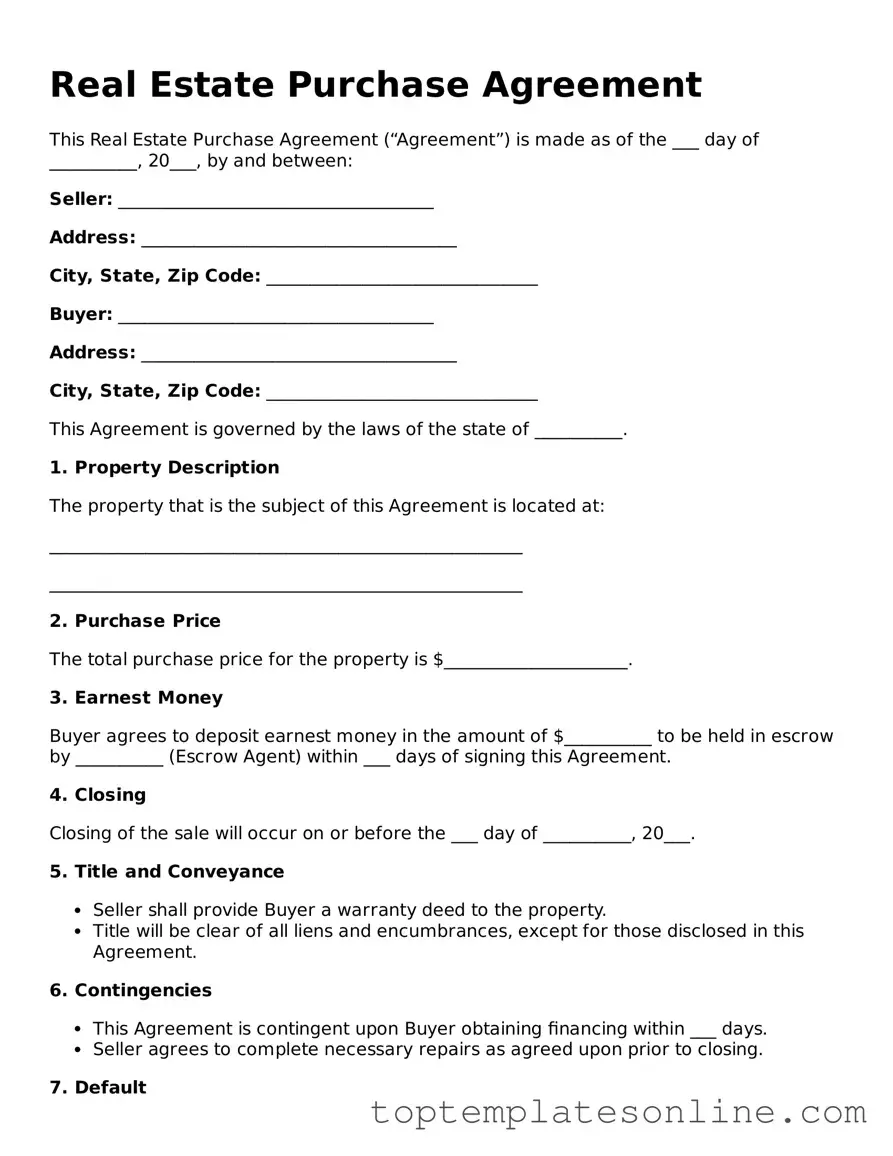Attorney-Approved Real Estate Purchase Agreement Form
A Real Estate Purchase Agreement is a legally binding document that outlines the terms and conditions of a property sale between a buyer and a seller. This form serves as a comprehensive outline of the transaction, detailing aspects such as the purchase price, closing date, and any contingencies. Understanding this agreement is essential for both parties to ensure a smooth transfer of property ownership.
Customize Real Estate Purchase Agreement Here
